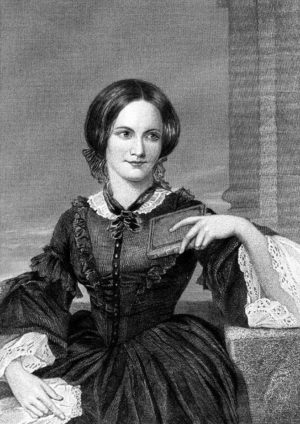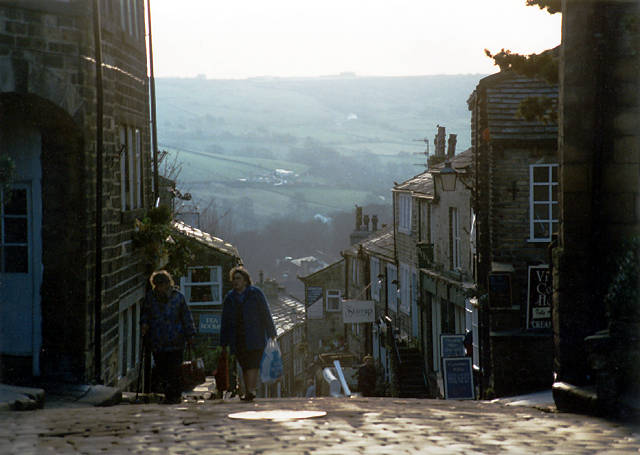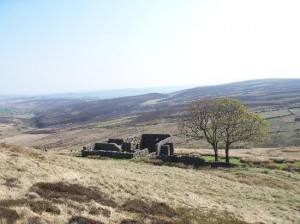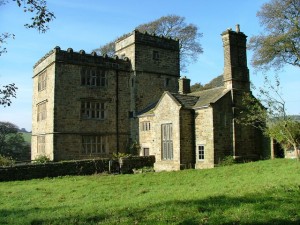You have no items in your cart. Want to get some nice things?
Go shopping
If London’s smoggy skyline, bright lights and bustling pavements aren’t helping you put pen to paper, maybe it’s time to leave the capital for greener pastures. Follow in the footsteps of Britain’s literary greats for a spot of creative inspiration…
People have often wondered how one little corner of 19th-century Yorkshire—the tiny, time-warped village of Haworth—could have produced an entire family of ground-breakingly successful female writers. If you’re suffering from writers block, it may well be worth visiting. Who knows, you might uncover the secrets of the vicarage that produced the Brontë sisters, or stumble across a rugged inspiration for the gothic setting that features in many of their novels.
Considering where they were brought up, the Brontë sisters were radically modern for their time. Nestled in the West Yorkshire moors, the hilltop village of Haworth is home to the parsonage where the Brontë family lived and where the sisters penned their most famous novels. The building is now home to the world famous Brontë Parsonage Museum, which has opened each of the rooms and carefully presented them as they would have looked whilst the Brontë family lived there. The dining room is reported to be the room in which the sisters did most of their writing so bring a notebook with you in case you are suddenly gripped with inspiration whilst you’re there. Teeming with Victorian artefacts, the museum also showcases what remains of the Brontë family possessions.

The region around Haworth is generally assumed to be the setting for most of the Brontë’s novels. The heather-topped moors and crags of Brontë country are markedly different from other parts of Yorkshire, giving the area a bleak, desolate, and inhospitable feel. When in Haworth, a short walk into this landscape to visit the Brontë waterfall is a must. Consisting of a stream that rushes over rocks, a little bridge, and a stone shaped like a chair, the sisters often came here to write. The stone, now known as the Brontë Chair, was allegedly shared by the sisters who started each of their novels while they sat on it. If the rumours are to be believed, the chair might have helped the sisters come up with the ideas for their beloved characters and gripping story lines. Giving it a go yourself is definitely too good an opportunity to miss!

I wouldn’t recommend following in the footsteps of Branwell Brontë, the least successful or creative of the siblings, but if you fancy a tipple during your trip you should really visit the Black Bull pub where Branwell is alleged to have begun his drinking and opium-smoking habit.
After that, hunt down the places which inspired the most famous novels to come out of Haworth Parsonage, Emily’s Wuthering Heights and Charlotte’s Jane Eyre.
Initially rejected by publishers, Wuthering Heights was eventually printed under a male pseudonym. The novel, due to its depictions of extreme emotion, lust and madness, was considered controversial when it was published and, probably for this reason, has only increased in popularity over time.
The word “wuthering” means turbulent weather and you’d be lucky not to experience a little of it when visiting Yorkshire’s moors. No doubt Emily was inspired by the cruel winds and bitterly cold winters that this part of England is still subjected to. Just a short walk away from Howarth, the Top Withens farmhouse is thought to be the inspiration for Emily’s gothic house in Wuthering Heights. Even on a sunny day it is easy to see how Top Withen’s isolated and windswept location could have inspired Emily’s desperate and dismal love story. The farmhouse Emily Brontë knew is now in ruins overlooking the desolate moors but it is still a popular walking destination and well worth a visit. In its depleted state, lying on the picturesque Pennine way, the location could inspire any writer to put pen to paper.

Follow the Pennine way a little further and you’ll come across Ponden Hall. The listed Elizabethan farmhouse is situated in the wild hill farmland above Haworth and is believed to be the inspiration for Thrushcross Grange.
The moors themselves though were arguably what Emily took most of her inspiration from. To submerge yourself fully in the passionate and exciting world Emily created, take a map (and a waterproof), pop Kate Bush’s Wuthering Heights on your iPod and wander around Yorkshire’s “wiley, windy moors”.
Considered to be a pseudo autobiography, it is easy to uncover Charlotte’s inspiration for her bestselling novel Jane Eyre in her own experiences. Charlotte’s inspiration for the cold and cruel Lowood School came from the Clergy Daughter’s School in Cowan Bridge where Charlotte and her sisters Emily, Elizabeth and Maria attended as children. The death of Jane Eyre’s dear friend Helen Burns is often thought to be a reference to the traumatic deaths of her older sisters, Elizabeth and Maria, whilst at the school.

Many places have claimed to be the inspiration for the gothic manor of Thornfield, though it is most likely to be North Lees Hall. The sixteenth century house is situated in the Peak District and was visited by Charlotte and a friend in 1845. The impressive building has historically been inhabited by the Eyre family and boasts a history filled with mysterious occupants; the first owner, Agnes Ashurst, was allegedly confined in a room on the second floor due to her insanity in a similar way to which Bertha was in Charlotte’s famous novel. If you’re feeling extravagant you can stay a night in this historical house. Just remember to lock your door before you blow out your candle.
Norton Conyers has also been suggested as the setting for Thornfield Hall as Charlotte visited the property in 1839. Another property with a legend of a madwoman in the attic, the house certainly provides a suitable setting for a mystery novel. The discovery in 2004 of a blocked staircase connecting the first floor to the attic, similar to the one described in Charlotte’s novel, provoked many questions about which house really inspired Mr Rochester’s abode. The house is currently shut to the public though so unfortunately, rather than seeing the attic for yourself, you’ll still have to use your imagination…
If you feel like you still need a little more inspiration, visit in September and go to the Brontë Festival of Women’s Writing (16-18 September). The festival weekend will include talks by prominent and emerging women writers and creative writing workshops that are sure to inspire.




